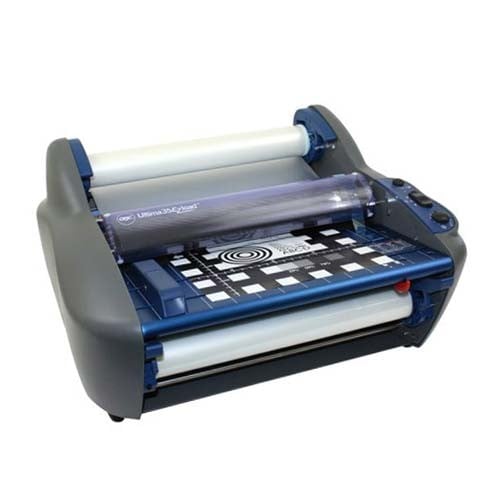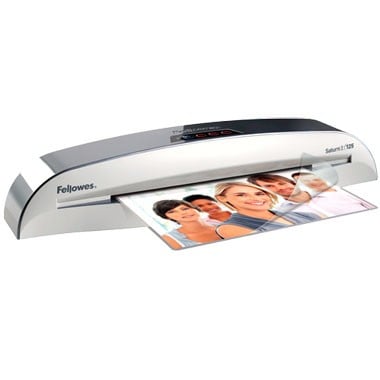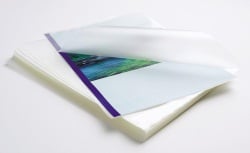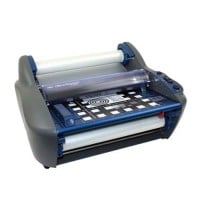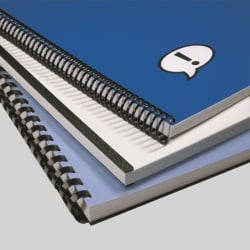MyBinding Knowledge Base
- Binding (248 Article)
- General Binding (42)
- Plastic Comb Binding (57)
- Fastback Binding (59)
- Perfect Binding (2)
- Modular Punching (8)
- Zipbind (3)
- Twin Loop Wire (13)
- Coil Binding (22)
- Thermal Binding (14)
- Strip Binding (1)
- VeloBind (4)
- Binding Covers (14)
- Proclick Binding (10)
- SureBind (4)
- Screw Post (2)
- Hole Punches (2)
- Staplers (4)
- Komtrak Insprial Binding (2)
- Paper (1)
- Rhin-O-Tuff (5)
- Binding Machines Comparison (17)
- Laminating (109 Article)
- General Laminating (26)
- Roll Lamination (16)
- Pouch Lamination (36)
- Pouch Board Laminator (3)
- School Laminator (3)
- Foil Laminating (3)
- Royal Sovereign Laminators (10)
- Laminators Comparison (3)
- Boards (11 Article)
- Bulletin Boards (3)
- Whiteboards (5)
- Chalkboards (1)
- Paper Shredders (44 Article)
- General Shredding (35)
- Industrial Shredders (1)
- Cross-Cut Shredders (2)
- Cardboard Shredders (1)
- Multimedia Shredders (1)
- Personal Shredders (1)
- High Security Shredders (2)
- Ring Binders (9 Article)
- Specialty Binders (2)
- Reinforced Paper (1)
- Health Care Punched Paper (1)
- Perforated Paper (2)
- View Binders (1)
- Index Tabs (9 Article)
- Index Tab Dividers (2)
- Copier Tabs (4)
- Pocket Folders (1)
- Custom Index Tabs (1)
- Pre-Printed Index Tabs (1)
- Paper Handling (37 Article)
- Paper Folders (9)
- Paper Joggers (2)
- Guillotine Cutters (4)
- Rotary Trimmer (3)
- Electronic Paper Cutters (1)
- Corner Rounders (2)
- Paper Scoring (2)
- Paper Drill (2)
- Booklet Makers (3)
- Stack Cutters (1)
- Paper Handling Equipment Comparison (5)
- ID Accessories (12 Article)
- Badge Holder (1)
- Lanyards (8)
- Badge Reels (1)
receive
$5off
*On order $25 or more.
How to Score Paper?
When working with thicker paper stocks, it’s often necessary to score materials before you can fold them. So what is scoring? Scoring creates a line in the paper which guides the fold. By learning how to score paper, you can reduce cracked and sloppy creases and give your materials a professionally finished look. There are a few different methods used to accomplish this. Here’s how to score paper:
First, use a dull knife and a ruler. Press the ruler down firmly at the place you want to fold. Then take the knife and draw a line, staying right next to the ruler. You want to press down firm enough to create a valley in the paper deep enough to allow the paper to fold easily.
Another option is to use a bone folder. This is used in the same way as described above, simply replacing the knife for a bone folder. These are found in craft stores, usually in the paper crafts section, next to the card-making supplies.
For a more professional look, you can add a scoring blade to your paper trimmer. Many rotary trimmers offer interchangeable blades that can score and perforate your papers as well as add decorative edges. A great device for this is the Swingline SmartCut 12″ Dial-A-Blade Plus. This device is perfect for scrapbooking, card-making, and other paper crafts. Without changing the blade cartridge, you can switch between straight and wave cuts as well as scoring and perforating.
Larger scoring jobs require dedicated scoring machines. Some paper folders include this as an option. You can choose between devices featuring a rotary scoring wheel or a pressure crease. Rotary scoring machines work similarly to trimmers including a scoring blade. You pull the scoring device over the page to create an indentation, allowing you to fold easily. Compression scoring machines offer higher quality results but take longer to complete. As the name implies, they press a crease into the paper instead of impressing a line.
Now that you’ve heard about how to score paper, here are a few tips for when you do: First, be aware that thicker papers will need a wider score. When making your mark, know that a correct score will result in a ridge on the inside of the paper. This minimizes the stretch of the paper fibers. If you’re making your scores by hand, it’s worth noting that this is difficult in very high humidity. When folding cardstock, your documents will have a more professional look if the final crease is parallel to the paper grain (if there is one).
If you go through all the work of scoring your paper before you fold it, make sure you burnish the finished product to further seal your crease. Burnishing is simple and only adds to the finished look of your project. Simply take a firm, dull implement, such as a pen, and use it to press firmly on your crease. The thicker the paper you use, the more important it is to burnish. And that is how you score paper.
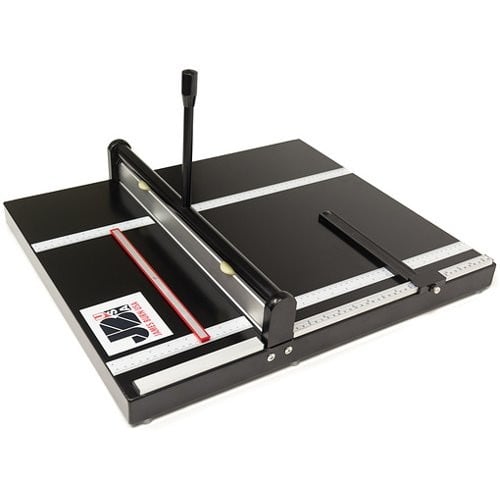
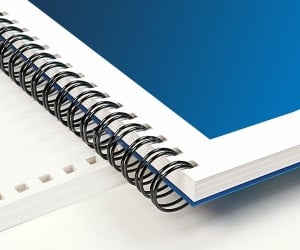
< Over the years, a number of customers have asked me whether they can use twin loop wire with their plastic comb binding machine. These customers often don’t want to have to buy a brand new machine but like the look and feel of twin loop wire binding. However, the answer to their question isn’t as simple as it seems. You see, they actually do make twin loop wire that is designed to work with the plastic comb binding hole pattern. With that said, if you want to use these wires you are going to need a way to close the wires. What is Spiral-O Wire? Let me explain a little bit more…There is a product that we carry called Spiral-O Wire. This wire has 19 loops and is designed to work with the hole pattern from a plastic comb binding machine. Spiral-O Wire is sometimes called Wire Combs or Ibico Wire and was originally designed for use with some of the older Ibico binding machines. A number of the older Ibico plastic comb binding machines also included a twin loop wire closer on the front of them to allow users to use both plastic combs and wire. This 19 loop wire was designed for this purpose. What Equipment is Needed? As the Ibico brand has been phased out by GBC and all of the older Ibico plastic binding machines have been replaced with new models, they no longer have the twin loop wire closer on the front of them. This presents a problem in trying to use these spiral-o wires since you can’t use the wires without a way to close them. One of the only options left is to purchase a Twin Loop wire closer. However, since twin loop wire closers are not incredibly cheap this option usually only appeals to users who have larger electric plastic comb binding machines. Otherwise, it is often advisable to simply buy a low end 3:1 pitch twin loop wire binding machine (the supplies are cheaper). This being said, if you have one of the older Ibico binding machines that has a wire closer included you are in luck. The Spiral-O binding supplies that we carry will work perfectly with your machine and you will be able to use both plastic combs and wire depending on your needs. These Spiral-O binding supplies are available in Black, Silver, White, Blue and Red and in sizes up to 1″ in diameter. If you aren’t sure what type of wire binding supplies that you need to work with your machine simply give us a call. Our trained sales representatives will be glad to help you find the correct supplies for use with your machine.(Read More)
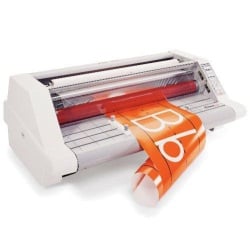

Loading...


